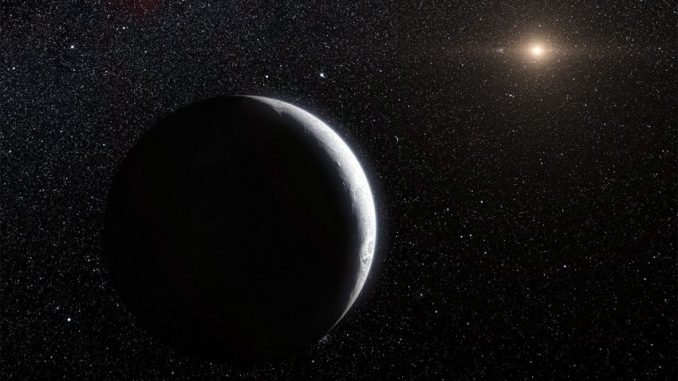
An icy planet with a 20,000-year orbit has been discovered passing through our solar system, leading to the re-emergence of theories about the existence of the mysterious Planet Nine
L91, as the icy rock is called, is one of a growing number of icy worlds with strange orbits discovered at the edge of the solar system.

BYPASS THE CENSORS
Sign up to get unfiltered news delivered straight to your inbox.
You can unsubscribe any time. By subscribing you agree to our Terms of Use
Latest Video
According to scientists working on the Outer Solar System Origins Survey, L91 is an enigma defying previously established gravitational patterns, and its discovery has added to mounting evidence that there are gravitational disruptions going on beyond what we can see.
In the case of L91, some astronomers believe that the external disrupter could be a ninth giant planet, dubbed planet x, which is as yet undiscovered.
However, L91’s discovery team favors a scenario in which the disturbance is caused by something more mundane: a passing star, or the Milky Way’s gravity.
The Mail Online reports:
According to Science magazine, L91’s huge elliptical orbit means the icy world never comes closer than 50 times the distance between Earth and the sun (1 AU) and may swing as far out as 1,430 AUs.
Astronomers believe that the strange paths of distant object such as L91 and others, such as Sedna, are affected by the gravitational pull of a dense world far beyond the known eight planets: the as yet unidentified Planet Nine.
A team at the Outer Solar System Origins Survey (Ossos) have been tracking the icy worlds beyond Neptune to study their origin and why they take the paths they do.
Presenting their findings this week at a meeting of the American Astronomical Society’s Division for Planetary Science in Pasadena, California, members of the team indicate that L91 is being pulled by a distant object, resulting in its elongated orbit.
Some astronomers believe the effect is caused by the unidentified Planet Nine, reports Nature, but the Ossos team thinks the disturbance could be explained by a passing star, or by the sheer mass of the Milky Way.
‘Every time we find another one of these objects, it adds another piece to the puzzle,’ planetary scientist Meg Schwamb told Nature.

A growing body of evidence suggests that planets in the early solar system jostled for position, moving around, drifting, colliding with one another and dragging other, smaller bodies with them before settling down in the orbits we see today.
During such a tempestuous phase, the enormous gravity of the giants like Jupiter and Saturn would have captured or interfered with the orbits of smaller icy bodies, in some case catapulting them far out into the Oort cloud and dragging other bodies in.
The team believe that L91 may have started out with a fairly regular orbit, with little difference between its closest and furthest points from the sun.
But over the billions of years it has taken for our stellar neighbourhood to settle down, it would have made countless rings around the sun, each time being nudged slightly by Neptune until its orbit took it way out into the Oort cloud.
According to Science magazine, this extreme orbit may have been gradually smoothed out by the gravitational pull from a passing star, or from the steady pull of the Milky Way itself, returning the orbit to a more elliptical shape seen today.
Despite this plausible planetary backstory, some astronomers remain convinced that there is a simpler explanation.
Rather than being catapulted out and then dragged by passing stars, they believe Planet Nine has slowly beckoned the icy body further and further out over billions of years.


